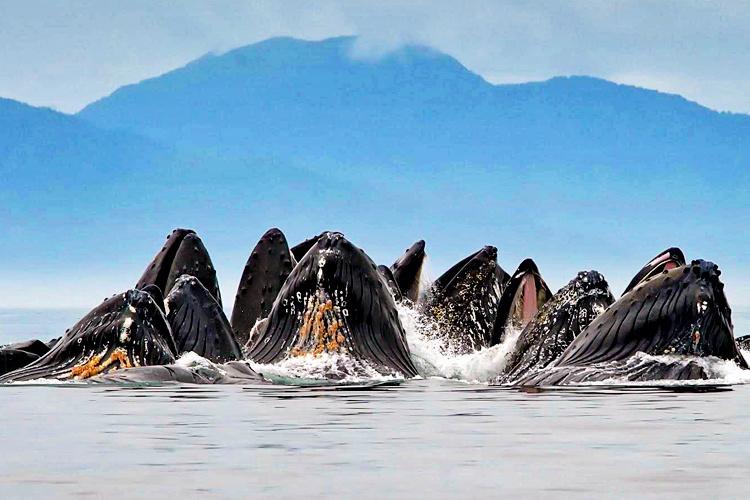NOAA Fisheries scientists monitor humpback whale populations and their impact on the North Pacific ecosystem to provide information crucial for their management and recovery.
Monitoring Humpback Whale Predation On Herring In Prince William Sound
This long term project evaluates the impact of humpback whale feeding on Pacific herring populations in Prince William Sound. Humpbacks may compete with other predators such as seabirds, seals, and sea lions for the small schooling fish and krill they feed on, or they may make it easier for other predators to find food by driving prey to the surface. We estimate how many whales are present, determine what they are eating, and compare this with the amount of food available to see what proportion they consume. Whales are identified and counted using photographs of the markings on the underside of their tail flukes—each one is unique. We figure out what the whales are eating through acoustic detection and net sampling of prey, visual observation, and whale scat analysis.
SPLISH - Survey of Population Level Indices for Southeast Alaskan Humpbacks

Feeding Humpback whale.
In 2015, four populations of humpback whales in Alaska waters were reclassified under the Endangered Species Act. Two of these populations were listed as threatened, and one remains endangered. Following this reclassification, there was a need for continued monitoring of the population.
SPLISH is a high-yield, low-cost monitoring program capable of reliably detecting both long- and short-term threats to humpback whale populations.
NOAA Fisheries collaborates with the University of Alaska, Glacier Bay National Park, and the Alaska Whale Foundation in this ongoing survey of humpback whales in Southeast Alaska waters, building on past survey efforts dating back to the 1970s. Using photographs of whale flukes to identify individual whales, we can determine trends in abundance, calf production, condition, spatial and temporal distribution, and prey composition.
All photos were taken under research permit.

